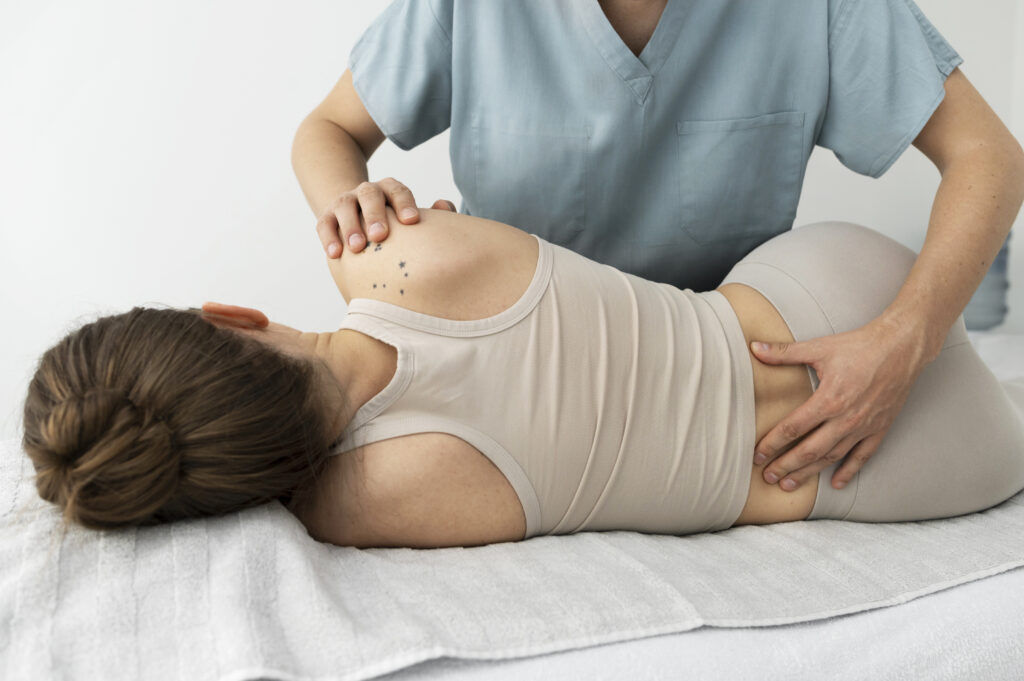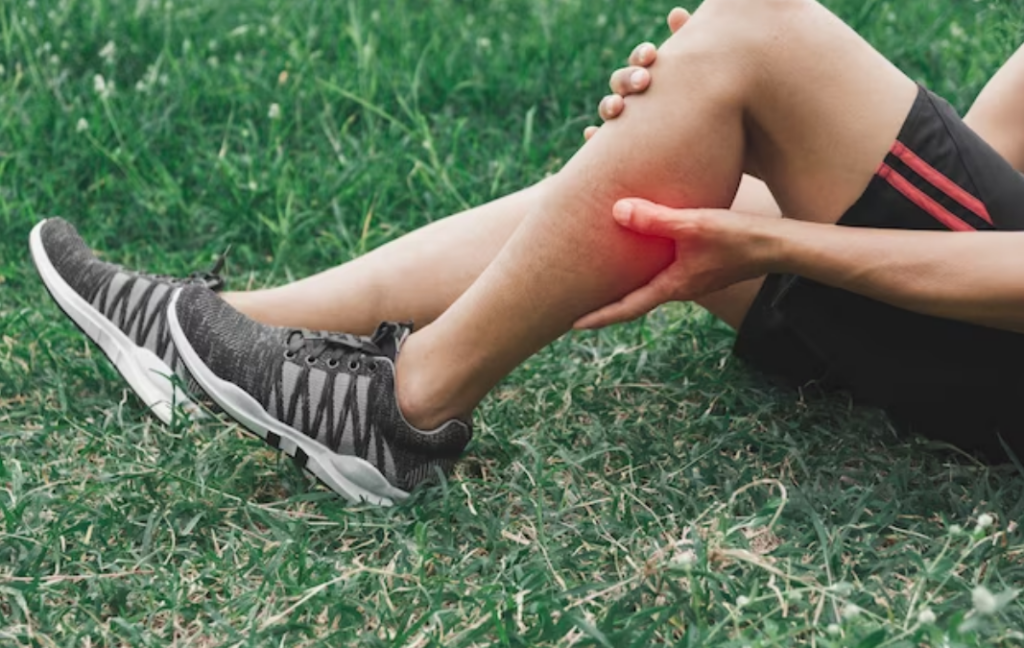Have you ever wondered how your joint flexibility stacks up against others? It's essential for not only athletic performance but daily activities as well. By taking a quiz designed to assess your knowledge and personal flexibility levels, you can gain insights into your strengths and areas for improvement. This engaging approach not only tests what you know but also encourages you to think about how to incorporate better stretching practices into your routine. So, what might your results reveal about your flexibility and movement? The next steps could be more impactful than you think.
Importance of Joint Flexibility
Joint flexibility is essential for maintaining an active lifestyle and preventing injuries. When your joints are flexible, you can move more freely, which enhances your overall physical performance. Think about activities you enjoy—whether it's running, dancing, or playing sports. If your joints aren't flexible, you might find yourself limited in your movements, making it harder to enjoy these activities fully.
Moreover, good joint flexibility plays a vital role in your posture and body mechanics. It allows you to maintain proper alignment, reducing the risk of strains and sprains. Without sufficient flexibility, your muscles and tendons can become tight, leading to discomfort and potential injuries during everyday activities. You mightn't realize it, but simple tasks like bending down to tie your shoes or reaching for something on a high shelf require a certain level of joint flexibility.
Incorporating stretching and flexibility exercises into your routine can greatly benefit your joints. By regularly working on your flexibility, you'll improve your range of motion, making it easier and more comfortable to engage in physical activities. This not only enhances your performance but also promotes recovery after exercise.
Understanding Your Flexibility Levels
Many people underestimate their flexibility levels, often assuming they're more agile than they really are. This misconception can lead to injuries and limit your overall movement potential. To truly understand your flexibility, you need to assess your current abilities honestly.
Start by recognizing that flexibility varies from person to person, influenced by factors like age, genetics, and activity level.
You might find it helpful to reflect on your daily activities. Are you comfortable bending down to tie your shoes? Can you reach for items on a high shelf without straining? These simple tasks can provide insight into your flexibility.
It's important to note that tightness in certain areas, like your hamstrings or shoulders, doesn't necessarily indicate a lack of flexibility overall. Sometimes, compensatory patterns in your body can mask limitations.
Consider engaging in a few straightforward stretches to gauge your flexibility. Try reaching for your toes or performing a gentle shoulder stretch. Pay attention to any discomfort or resistance you feel; it's a clear indicator of where you may need to improve.
You don't need to achieve a full split or touch your toes immediately, but recognizing where you stand can help you set realistic goals.
Ultimately, understanding your flexibility levels empowers you to tailor your fitness routine. This knowledge can guide you in incorporating exercises that enhance your agility, whether you're a seasoned athlete or just starting on your journey to better movement.
The Quiz: How It Works
In this section, you'll learn how the quiz is structured and what to expect.
By participating, you'll gain valuable insights into your flexibility levels and how they impact your movement.
Let's explore the benefits and features that make this quiz an essential tool for your journey.
Quiz Structure Explained
Understanding the quiz structure is essential for effectively evaluating your knowledge of joint flexibility and movement. The quiz is designed to assess your understanding through a variety of engaging questions.
You'll find that it consists of multiple-choice questions, true/false statements, and short answer sections. This diverse format keeps it interesting and helps you apply your knowledge practically.
Here's what you can expect from the quiz:
- Multiple-Choice Questions: These questions allow you to choose the correct answer from several options, testing your recall and comprehension.
- True/False Statements: You'll evaluate statements about joint flexibility and movement, which helps reinforce your understanding and discern factual information.
- Short Answer Sections: These require you to articulate your thoughts and insights, encouraging deeper engagement with the material.
Benefits of Participation
Why should you participate in the quiz on joint flexibility and movement? First and foremost, it offers a fun and interactive way to learn about the importance of joint flexibility in everyday activities. By answering questions, you'll gain insights into your own flexibility levels and discover areas where you might improve.
Participating in the quiz can also motivate you to incorporate more stretching and movement into your routine. You'll recognize how small changes can lead to significant improvements in your overall well-being.
Plus, by evaluating your knowledge, you can identify gaps that you may want to explore further.
Another benefit is the opportunity to engage with a community of like-minded individuals. Sharing your quiz results and experiences can foster motivation and accountability, making it easier to stick to your flexibility goals.
Lastly, the quiz is designed to be educational. You'll leave with practical tips and exercises tailored specifically to enhance your joint flexibility and movement.
Interpreting Your Quiz Results
Now that you've completed the quiz, it's time to understand your score and what it means for your joint flexibility.
Knowing where you stand can guide your next steps for improvement.
Let's break down your results and explore how you can enhance your movement.
Understanding Your Score
How do you make sense of your quiz results? Understanding your score is essential for identifying your current level of joint flexibility and movement. Your results can provide insight into areas that may need improvement or further attention.
Here's how to break it down:
- Score Range: Look at the range your score falls into. A higher score typically indicates better flexibility, while a lower score suggests that there may be room for improvement.
- Strengths and Weaknesses: Identify specific sections where you excelled and areas that may require more focus. This will help you pinpoint which joints or movements need extra care and attention.
- Comparison: If the quiz provides average scores, compare your results to see where you stand relative to others. This context can help you gauge your flexibility in a broader sense.
Next Steps for Improvement
After you've interpreted your quiz results, it's time to focus on how to improve your joint flexibility and movement. Start by identifying specific areas where you scored lower. This will guide your effort and help you set realistic goals. For instance, if your hips need work, consider incorporating hip stretches and mobility exercises into your routine.
Next, create a structured plan. Aim for at least three flexibility sessions per week, mixing dynamic stretches before workouts and static stretches afterward. Yoga or Pilates can also be beneficial, as they emphasize flexibility and balance.
Don't forget to listen to your body. If you feel pain, adjust your approach. Gradually increase the intensity of your stretching, and remember that consistency is key. Tracking your progress can keep you motivated—consider using a journal or an app.
Lastly, consider consulting a professional, like a physical therapist or personal trainer, for personalized guidance. They can provide tailored exercises to enhance your flexibility and help you avoid injuries.
With commitment and the right strategies, you'll notice significant improvements in your joint flexibility and overall movement.
Tips for Improving Flexibility
Improving your flexibility is essential for enhancing overall movement and preventing injuries. Whether you're an athlete or just someone who wants to feel better in daily activities, incorporating flexibility exercises into your routine can make a significant difference.
Here are some tips to help you improve your flexibility:
- Warm-Up Properly: Before diving into stretching, make sure you warm up your muscles. Engage in light aerobic activity for about 5-10 minutes to increase blood flow and prepare your body. This could be a brisk walk or some jumping jacks—anything that gets your heart rate up.
- Incorporate Dynamic Stretching: Instead of static stretches, try dynamic stretching before your workouts. Movements like leg swings, arm circles, and torso twists help increase your range of motion and prepare your joints for activity. They're great for improving flexibility without holding stretches for too long.
- Practice Consistency: Make flexibility training a regular part of your routine. Aim to stretch at least three times a week, focusing on different muscle groups each session. Consistency is key for seeing progress, so set aside time for stretching, even if it's just 10-15 minutes.
Incorporating Flexibility Into Routine
Incorporating flexibility into your routine doesn't have to be complicated; just a few simple changes can make a big difference. Start by setting aside time each day for stretching. Even just 10 minutes can enhance your joint flexibility and overall movement. You can incorporate stretches into your morning or evening routine, or even during breaks at work.
Consider integrating dynamic stretches into your warm-up before any workout. This prepares your muscles and joints for activity and reduces the risk of injury. After your workouts, spend a few minutes on static stretches to improve your flexibility and help with recovery.
Another effective way to improve flexibility is to include activities like yoga or Pilates into your weekly schedule. These practices not only promote flexibility but also enhance your balance and strength. You don't need to be an expert; just find a beginner class or follow online tutorials to get started.
Throughout your day, try to be mindful of your posture. Poor posture can lead to tightness and discomfort. Make a habit of standing tall and sitting correctly, which can help your muscles stay elongated and relaxed.
Lastly, listen to your body. If you feel any tightness or discomfort, take the time to stretch those areas gently.
Conclusion
Incorporating flexibility into your routine is essential for improving movement and preventing injuries. By taking this quiz, you've gained insights into your flexibility levels and identified areas for growth. Use your results to set achievable goals and stay motivated on your journey. Remember, consistency is key—make stretching a regular part of your day, and you'll notice significant improvements in your overall performance and well-being. Embrace the process, and enjoy the benefits of increased flexibility!



